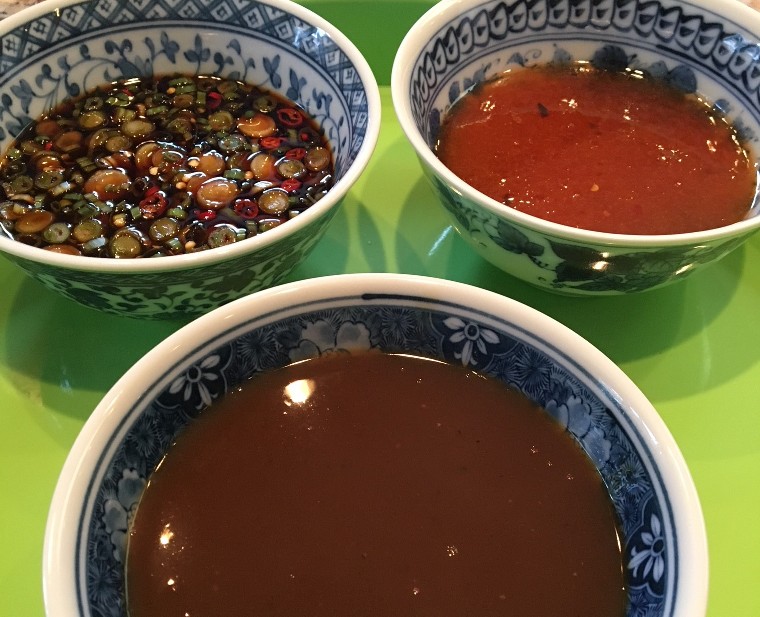As a gift to my father (who has never had a big desire for Christmas presents) I offered to make this year’s Christmas Day dinner, and I decided to add a few items to the staples I know how to cook, resulting in seven traditional Filipino dishes. For the most part, they turned out well, and despite some sketchy deep-frying danger (the pork skins were maybe not quite dry enough when they entered the hot oil) no one got hurt (aside from another minor knife cut to my finger). Here’s what we had:
- Lumpia (Filipino fried egg rolls)
- Embutido (Filipino meatloaf)
- Pancit (Filipino pasta)
- Adobo (Chicken in coconut/vinegar sauce)
- Ampalaya (Bitter melon)
- Lechon (Filipino pork)
- White rice (Yes, it counts as a dish. I needed to make it to seven.)
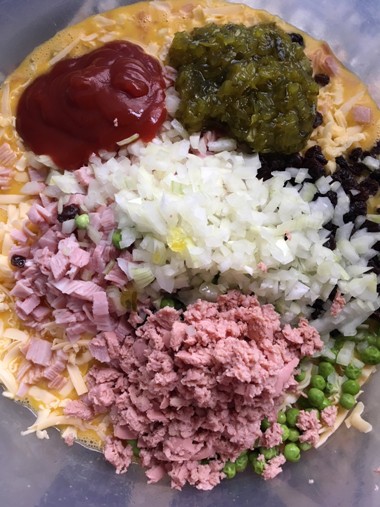
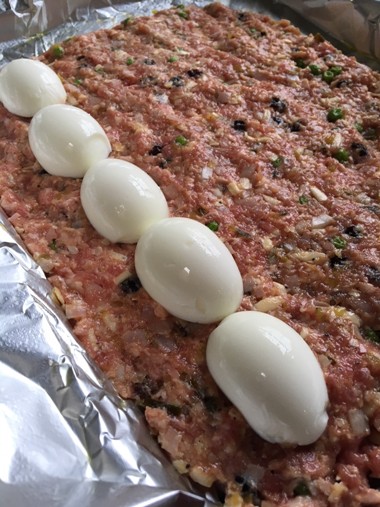
As I mentioned, three of these were brand new to my repertoire, so I was extra careful about getting them right, or at least edible. The showstopper may have been the Embutido, a Filipino meatloaf of sorts that incorporates hard-boiled eggs, Vienna Sausage, ham, peas, ketchup, sweet relish, raisins, cheese and pork in a dish that is so much more than the sum of its parts. I was super skeptical when putting it all together. (The Vienna sausage alone was enough to draw groans.) Surprisingly, it worked, and with its accents of eggs it made for a visual feast that most meatloaf doesn’t match.
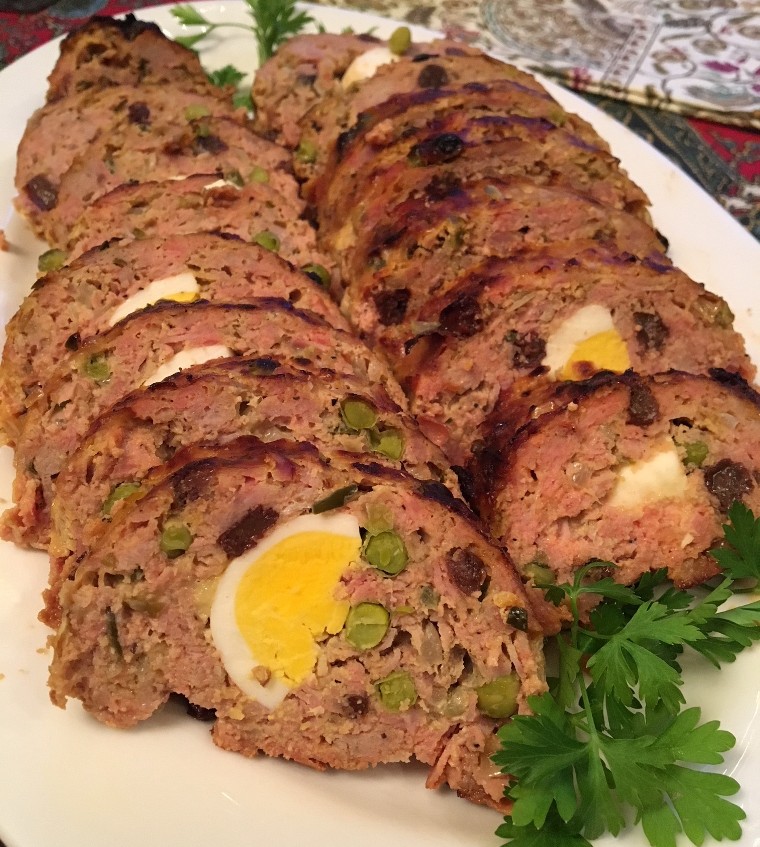
The pancit is always a lot of prep work – cutting and chopping and soaking – and then there’s a balancing act on how to get it moist enough without being too runny. It barely came together at the last moment, but that’s all that matters.
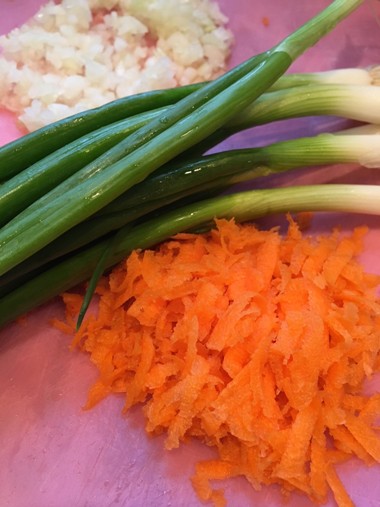
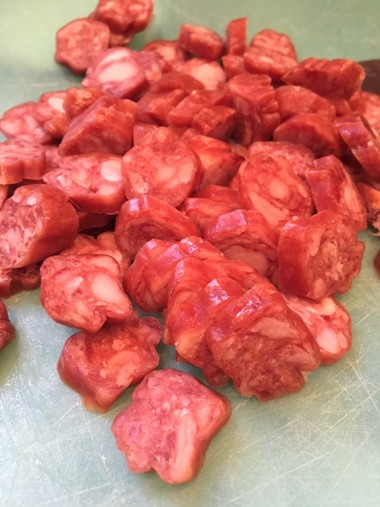
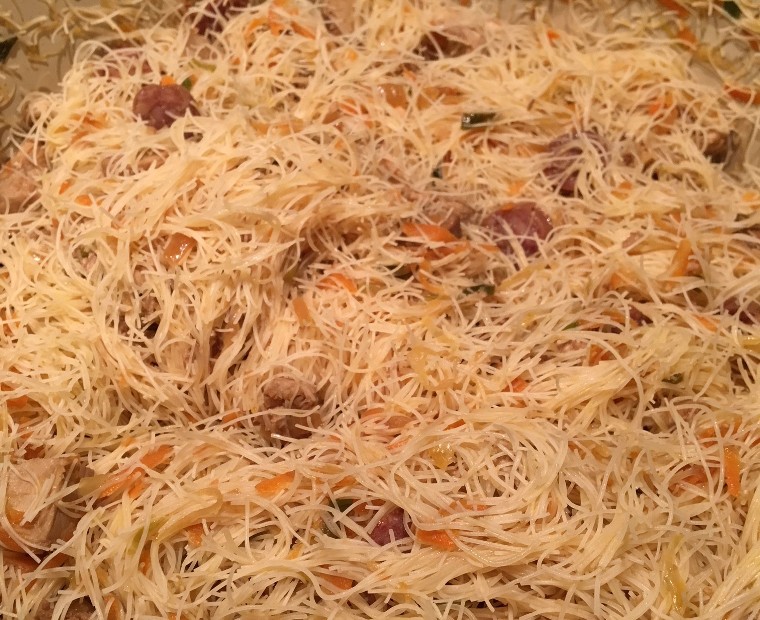
This was only my third or fourth attempt at lumpia, and thankfully the wrappers decided to cooperate (always a crap shoot). I’d made the filling the day before, and rolled them in the morning, making for an easy fry-job just before guests arrived. (If you cover them with a moist paper towel and some foil or plastic wrap, they keep quite well in a cool place, such as the garage when the fridge is overrun with other items.)

I made two dipping sauces for the lumpia – the first was a soy sauce/vinegar/chili pepper mix with some scallions for good measure, and the second was a sweet and sour concoction of rice vinegar, sugar, and, wait for it, ketchup. I’ve long since stopped turning my nose up at ketchup as an additive. From beef stew to Embutido to this dipping sauce, a little of the red stuff can work wonders.
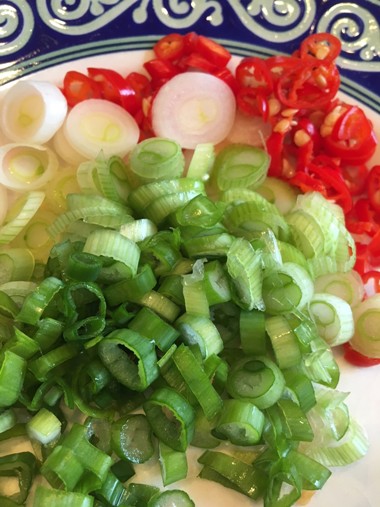
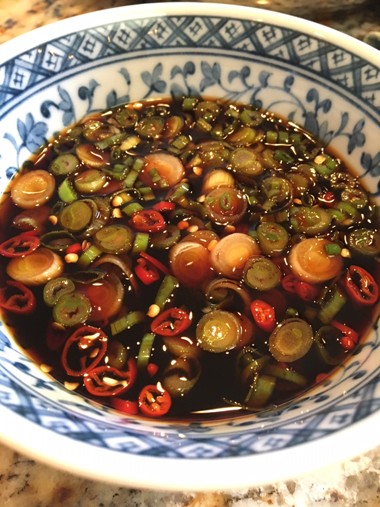
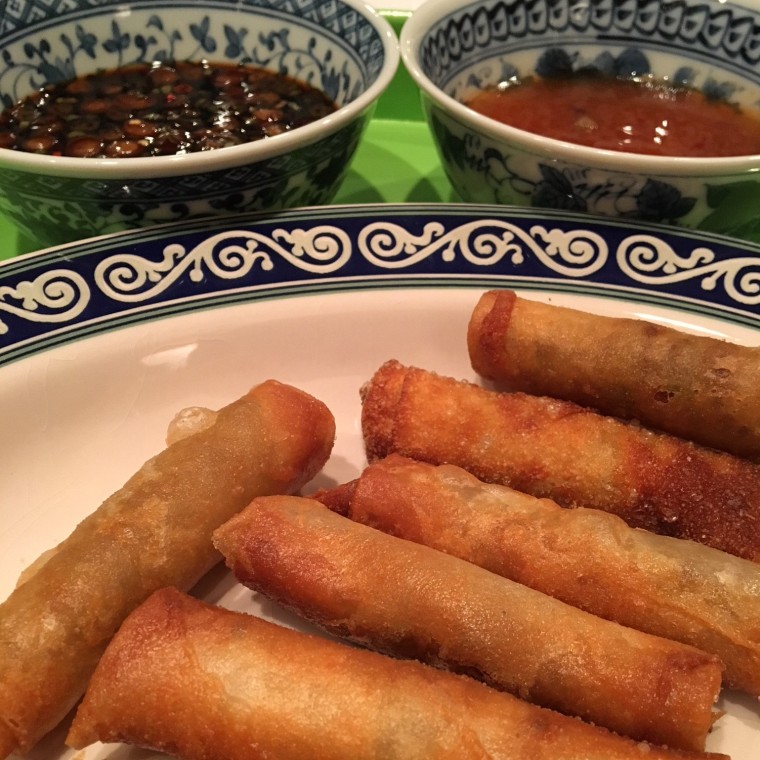
If I recall correctly, lechon was one of my Dad’s favorite dishes. We had it for special occasions only, and he loved the skin the most, so when I saw pork skin in the market, I picked up a pack, soaked it in some brine, and boiled the hell out of it. It dried out overnight, and my plan was to fry the skin as an appetizer and serve it with a traditional liver-based sauce that goes with lechon.
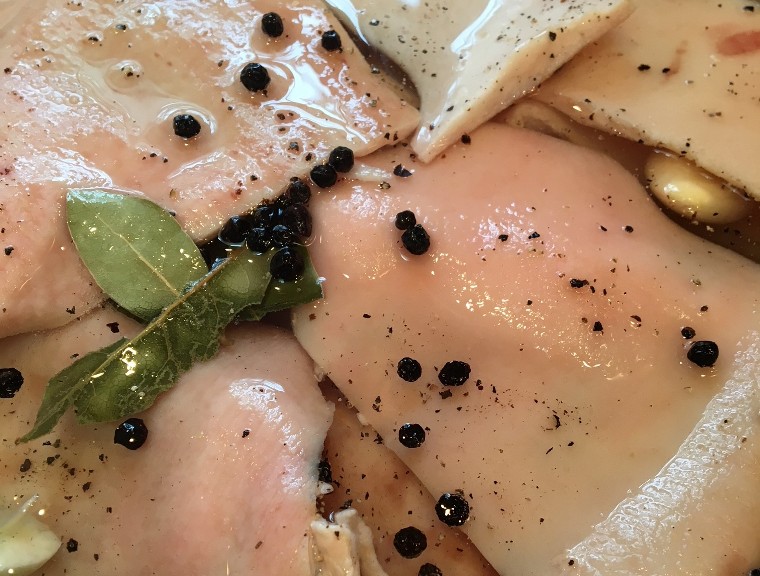
Apparently they hadn’t dried quite well enough, and soon after the pieces were dropped in the hot oil, mini-explosions started happening that brought Andy running in from the other room. No one was injured, but the oil was everywhere, and we only got a few pieces out of it. They’re an acquired taste anyway, so Dad got the whole small plate to himself.
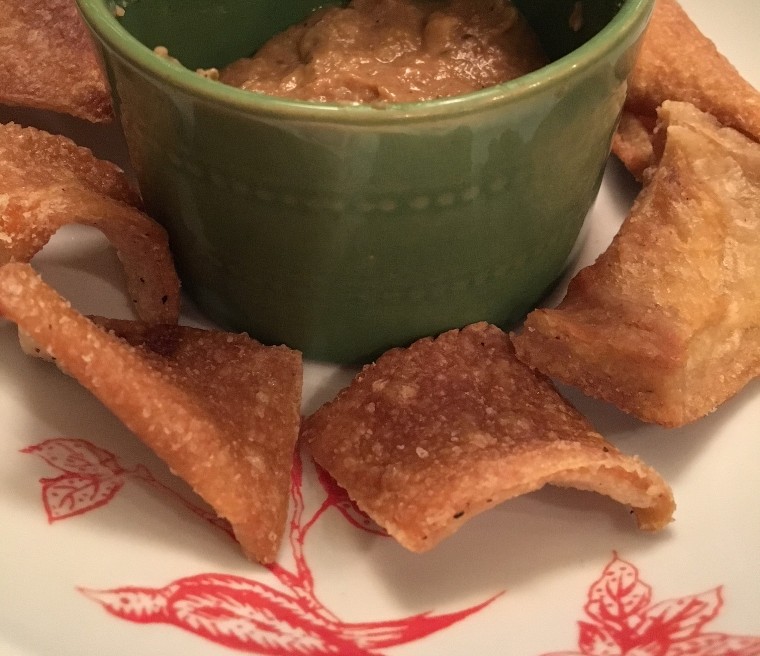
The rest of the lechon turned out better than expected. Keeping the skin on left the meat moist and tender – a trick I’ll be sure to repeat when doing pulled pork in the future. (I could only find pork with the skin still intact at the Asian Market – the folks at Price Chopper had never even heard of such a thing, which means we are on to something good.)
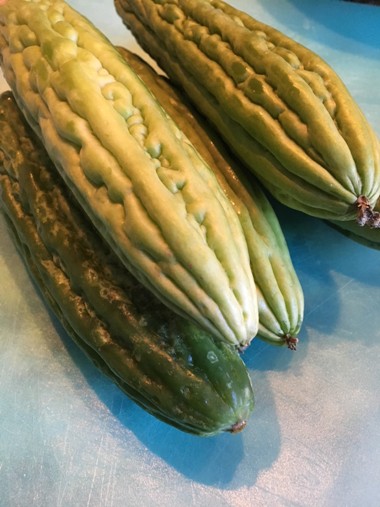
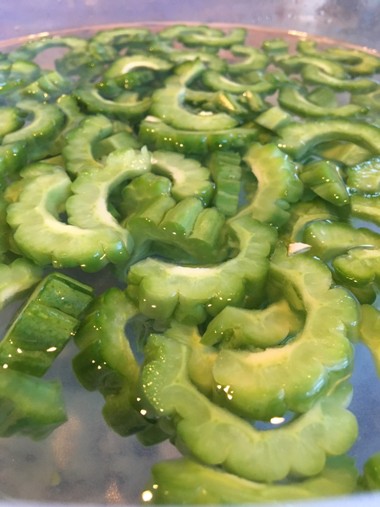
By far the most polarizing dish was the Amapalaya – bitter melon. Even after scraping out the pith, soaking in a salty bath, and squeezing out the excess bitterness, these were still bitter as hell. And I like bitter. More than earning its common name, this bitter melon was sauteed with onions, garlic and tomatoes, then flavored with soy sauce and almost tempered with a healthy dose of oyster sauce.
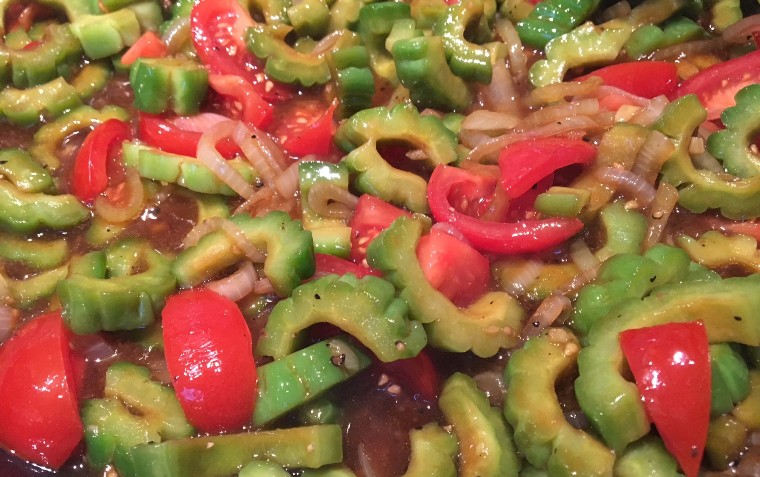
The latter’s sweetness was not enough to combat the bitterness, however, so this is not a dish for the faint of taste-buds. In small doses it works well, particularly when we were otherwise lacking on the vegetable front. They’re supposedly packed with vitamins and nutrients (even if some were leached out in the prep and cooking process).
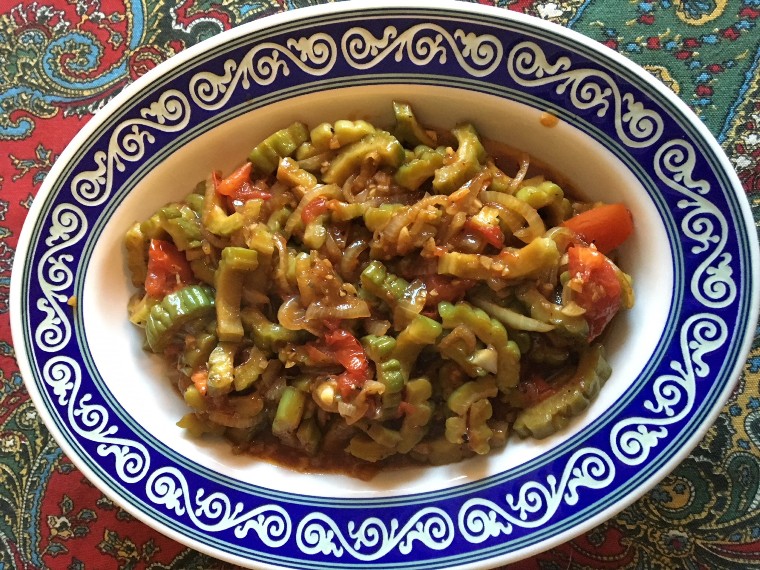
Though only three are on display here, there were actually four sauces created for this dinner. The aforementioned pair for the lumpia, then one for the Embutido, and one for the lechon. I knew one day all these bowls Andy bought would come in handy, and this was that day. We broke bread with the family in celebratory Christmas fashion, closing out the holiday in happy fashion.
